Author: SoukouDragon
Probably the most famous Japanese heavy tank is the O-I, a 120 ton multi-turreted gargantuan monstrosity. There is something appealing to it to say the least. But maybe it was actually 140 tons. There reflects the difficulty about this tank.
To get started, I find it might be helpful to draw out the full extent of Japanese heavies. It could help put things in perspective. So real quickly, here is a list of all Japanese heavy tanks possible for WoT with a few handy facts for each. All are multi turreted except for the noted Heavy X which I do not know anything about. Armor is listed in a front/side/rear format if the numbers are available. Otherwise just the maximum armor is given. The 100 ton and the O-I will be discussed afterwards.
Type 91
Built: 1
Date: Around 1931
Crew: 5
Main Armament: Short barrel 70mm
Weight: 18 tons
Engine: 224hp
Armor: 20mm
Based off Japan’s very first tank, the Experimental 1 tank.
Type 95
Built: 4
Date: 1935
Crew: 5
Main Armament: Short barrel 70mm
Weight: 26 tons
Engine: 290hp
Armor Turret: 30/25/25 Hull: 35/30/25
Improved firepower via forward mini-turret mounting a 37mm cannon. Improved armor and suspension redesigned.
100 ton
Built: 1
Date: 1940 (failed mobility testing)
Crew: 11
Main Armament: 105mm cannon
Weight: 100 tons
Engine: 550hp x2 for combined 1,100 hp
Armor: Front hull: 150mm Side Hull: 70mm
Top secret project initiated right after the Japanese suffered defeat from the Soviet Union in 1939.
O-I
Built: 1 (either completed or incomplete prototype)
Date: Started in 1944, unclear how long the project lasted. Likely until August 1945
Crew: 11
Main Armament: 105mm cannon
Weight: 120 or 140 tons
Engine: 550hp x2 for combined 1,100hp
Armor Turret: 200/200/200 Hull 200/110 or partial 75 and partial 35/150
Probably intended for Manchuria.
Heavy X
WG stated that a tank for tier 10 has been found. It was stated as huge and massive but still not heavier than the Maus. There is no official name that I know of.
The information that follows comes from multiple sources. The core parts all match but there are some inconsistencies. It is difficult to say which is true or false. The facts in the sources are mostly from what was described by those involved or on rumors. There are very little primary sources available like photos or complete original blueprints that could enable more consistency on available information. However Suzuki from Finemolds does have a collection of primary sources on the 100 ton tank. Aside from Suzuki, the other sources themselves often indicate how some history or technical details are speculated and remain unconfirmed. Some sources present information not giving in the other sources. So here will be a list of the sources along with reference abbreviations in parenthesis so that the reader can know where each bit of information is coming from after a little familiarization. I am afraid that while very interesting, reading this might be difficult to grasp at first because of all the different sources.
Pacific War Secrets: All Japanese Secret Weapons (JSW)
Imperial Japanese Army Land Weapon Guide (LWG)
Tank and Tank Battles (TTB)
Japanese Tanks (Hara – The primary author)
Suzuki’s pictured sources (Suzuki – Has the only primary sources from what I understand and thus likely to be the most accurate of all. Well, there could be more primary sources that are still being held secretly)
The Phantom 100 ton Super Heavy Tank
Below is from a section in TTB unless stated otherwise.
The writer of this section is Shigeo Otaka who was a Mitsubishi engineer involved in the 100 ton tank’s development. He states that in this section he applied information from other people involved in the project but due to the passage of time and the secret nature of the military program, he is unable to give a complete description of the tank. The description is made only from collective memories of those involved however the main features can be described.
The project was under the supervision of Colonel Murata from the 4th Technical Research Head Quarters. JSW says that Colonel Iwakuro from the Department of War gave the order to build the monster. The order to build the 100 ton tank came immediately after the defeat against the Soviet Union in the Nomonhan incident in 1939. LWG gives a quote from a position and ranked officer that is the same as Colonel Iwakuro but does not gave the officer’s name. Probably still Iwakuro. Quote and picture of Iwakuro below.
「満州の大平原で移動トーチカとして使えるような巨大戦車を作ってほしい。極秘でだ。」
“I want a huge tank built which can be used as a mobile pillbox in the wide open plains of Manchuria. Top secret.”
Here is another quote from LWG of an undisputable requirement from the Colonel.
「今の戦車の寸法を2倍に延ばして作れ」
“Make the dimensions twice that of today’s tanks.”
Hideo Iwakuro:
Shigeo Otaka and several others were guided multiple times throughout a wooden barracks that used to be the headquarters of the 4th Technical Research Group, sometimes crammed together in small rooms. Under strict rules to speak of nothing of what will be seen, the group of people was finally led to a secret room. The room had a two door entrance to reduce the chance of eyes catching a glimpse of the interior. Nobody outside of the room knew what was going on. Here, the plan was pulled out in lots of random pieces. It was an effort for the group just to bring all the pieces together but eventually the secret tank image appeared. There were some concerns whether the tank would be able to move or how it could be transported but those concerns were kept individually private. However, the behemoth was both imposing and impressive.
Total length was 10 meters. Total width was 4.2 meters, and total height was 4 meters. Height without the turret was 2.5 meters. Track width was 900mm. The power plant was two 550 horsepower air-cooled gasoline engines for a combined horsepower of 1,100hp. Top speed was 25kph.
This section from the TTB writes that the army called it the O-I and Mitsubishi called it Mi-To (Mitsubishi-Tokyo). Hara, JSW, and LWG call only the 120 ton tank the O-I so TTB could be mistaking here. JSW and LWG say the O-I was called Mi-To and not the 100 ton tank. Hara does not mention “Mi-To” but does say that both the 100 ton and the O-I were developed by Mitsubishi. Perhaps both were actually called Mi-To. At least according to Hara, the “Mi” part is true for both. Maybe both were also made in Tokyo. JSW says that according to one rumor, that when the O-I was completed, it was disassembled at Mitsubishi Heavy Industries Shimo Maruko factory to be shipped to Manchuria. Shimo Maruko is in Tokyo. It seems to me that both the 100 ton and the O-I were called Mi-To.
Perhaps, and this is again pure speculation I am going to interject here, but perhaps do to the terrible failure of the mobility test (which you will soon read) led people to forget using the O-I name for the 100 ton due to its fail. The naming convention that the O-I was from was in effect at the time the 100 ton was in development. If all testing was successful, perhaps the 100 ton would have become the O-I which would mean the 120 ton would have to become the O-Ni.
Anyway, continuing on with the TTB 100 ton tank section…
The two engines were placed length-wise parallel to each other in the rear section of the tank. Both engines were used at the same time which made it difficult to use. The structure of the transmission was the same as the Type 97 Chi-Ha however the gears were heavy. The 5-speed forward gear lever was in center front of the driver and both hands were used to adjust the lever. The tank was rear-wheel driven. The engine, driver, and transmission layout is illustrated in picture 1 a couple of paragraphs down.
The design of the suspension in picture 2 used coil springs. Each side of the tank used 3 of these 4-wheel sets for a total of 12 road wheels per side. The drawings from Suzuki have 8 wheels which would mean 2 sets, not 3 sets per side. Other artist impression drawings also have 8 wheels and a few have 10 wheels. In my opinion, 8 is most likely to have been the case. The road wheels had no cushion like rubber at all. The hard metal wheels contacted directly with the tracks.
All the armor was made with soft steel. Some other Japanese prototype tanks have also been made with soft steel such as the Type 4 Chi-To 57mm cannon prototype in 1944. The front was 75mm thick with an additional 75mm thick plate stuck on for a total thickness of 150mm. The side hull was 35mm thick. Over the side hull and over the suspension were side skirts with a thickness of 35mm bringing the total side armor thickness to 70mm. The side hull armor and side skirt armor is illustrated in picture 3.
It was easy to stand within the interior of the tank and there were even paths throughout the vehicle. The driver’s compartment, central fighting compartment, and engine room were separated by 16mm thick walls.
There was no window for the driver and thus used a periscope instead. Aside from the gear lever and the accelerator, everything else was hydraulic which made it easy to drive.
For testing, it was shipped to Sagami Armory. Only the people involved in the development of the tank did the transporting and it was a major ordeal. The tank was covered with awning and shipping started at 2:00am at night and ended when night was broken by the sun. Transportation took 10 days. Sagami Armory was located in Kanagawa which is adjacent to Tokyo giving more support to the idea the 100 ton tank was in fact built in Tokyo thus having the name “Mi-To” plausible.
On the day of testing, Colonel Murata was called to the battle front so in his place for observation was Lieutenant Colonel Nakano. The chief of Sagami Armory was also there, Tomio Hara himself. The ground at the location was quite soft so during off-road testing, as the tank drove, its treads sank into the ground by a meter. Vehicle rotation would also cause the tank to sink. Perhaps due to stiff coil spring cushioning, the road wheels came out. That canceled the test. On a concrete road, bits of both tracks came out and the concrete was ripped. After test, a full bow with both hands to the ground was made to the repair department chief and that put an end to the 100 ton tank. It was covered with awning again and left there until 1944 when it was finally scrapped.
Another section in TTB contains an interview with four Mitsubishi tank engineers during the Imperial Japan era. Below is a picture of them.
Information from the interview feels a little vague but some additive bits are described here. Two turrets were lined up (mini-turrets in the front I assume), top speed was 40kph (begs for some skepticism if I may say so), and armor was 100mm. There is no existing photo. It was a top secret project under military order. There were many pains regarding issues like whether or not to make it lighter, to make it roomier inside, and to cut down on complexity.
Hara described the 100 ton as the following. In 1940 a 100 ton super heavy prototype was built. Its outside appearance resembled the Type 95 heavy tank. The main armament was a 10cm cannon (meaning 105mm cannon most likely. There is no source that specifically says what 10cm cannon was used. The Type 92 is the likely case but maybe it could have been something else). Mini-turrets were present on both the front and rear of the tank. The number of mini-turrets is not described. The suspension type was coil springs and the tank was camouflaged. The tank was tested but failed and thus later was destroyed.
Suzuki shows three mini-turrets. Two lined up in the front and one in the rear. His pictures below.
LWG says that the 100 ton tank hull was completed and underwent testing. Despite the fairly detail account provided by TTB, no turret details were giving. So it seems very likely that the 100 ton tank was tested without the turret (or turrets).
A shrine in Japan called the Wakajishi Shrine has (or had) on display a very large track link. Suzuki stated that while the link seems like it belongs to the O-I, it’s more likely that it belongs to the 100 ton tank. The track link has the same shape as a Chi-Ha but just much larger. It is so heavy that 1 man cannot lift it. The width is about 800mm and the pitch is about 300mm. Here is a link to the webpage with the track link at the bottom of the page (also below) and what is described in this paragraph in the Japanese text right of the track link picture (source: Wakajishi shrine page)
The O-I Monstrosity
In the name “O-I” (pronounced as oh-ee), the “O” means big, or in tank lingo, heavy, and the “I” means “one” or “first”. So it means “First Heavy”. Many Japanese tanks comply with this naming convention. If the O-I was ever completed, it would have received a “Type” designation in the front. Anyway…
Below is a description from Hara.
In 1944, there was a plan for a 120 ton tank named “O-I”. The main armament in the central turret was a modified Type 92 10cm cannon. Two mini-turrets were lined up in the front hull in a way that the mid-point of the two turrets was slightly left from the mid-point of the tank. One armed with the Type 1 47mm tank gun and the other armed with a Type 97 7.7mm tank heavy machine gun. In the rear portion of the tank, there was a machine gun turret with two 7.7mm machine guns. That makes a total of 4 turrets. 200mm thick heavy armor was giving to the tank. The suspension was of coil springs. The power plant was two modified aircraft air-cooled BMW gasoline engines which gave a total of 1,100 horsepower. Top speed giving is 25kph. Length, width, and height, are 10 meters, 4 meters, and 4.2 meters respectively (LWG puts the length at 11 meters). Track width giving is 750mm (which is a little surprising as it is somewhat slimmer than what is giving for the 100 ton tank). This same modified engine was also loaded in the Type 5 Chi-Ri medium tank. Like the 100 ton tank, the project was giving to Mitsubishi but due to the war situation, the project ended before its completion.
Type 92 105mm cannon was an L45 and had a muzzle velocity of 765m/s. It was widely used by the Japanese as a field cannon. Maximum range was 18,200 meters.
A reason for building the O-I is giving by LWG. By 1944, the war situation for Japan has become desperate. Some information about super heavy tank development in Germany has come to Japan and that rekindled the idea for a super powerful tank. Thus development restarted on a new super heavy which was called the O-I. It was 120 tons and had 3 or 4 turrets. In the picture below also in LWG, the rear machine guns are coming out of gun ports on the main turret rather than in a 4th mini-machine gun turret mounted in the back like Hara said.
It is generally thought that it was never completed however there is one testimony saying that it was completed and that it weighed 140 tons. Some rumors say that it was completed and then disassembled for shipping to Manchuria.
For World of Tanks
From the readings here, nothing indicates that there were multiple designs for either the 100 ton or the O-I but there are several interpretations. That is not to say with great certainty that there were no multiple designs but it seems unlikely. Tier 10 is the heavy X. So that leaves tiers 9 and below. The Type 95 heavy tank is hardly tier 4 quality. So if saying we wanted to start at tier 5, the 100 ton tank and the O-I would need to fill up tiers 5, 6, 7, 8, and 9. This might require some liberal use of different interpretations in order to create 5 different tired tanks.
An easy pick up is removing the 35mm side skirts and the 75mm front armor slab from the 100 ton so as to create a lighter low armored “100 ton” with 75mm front armor and 35 side armor at tier 5 and then have a tier 6 “100 ton” with its full complement of armor.
For tiers 8 and 9, one way could be to have the tier 8 O-I be the 120 ton version and the tier 9 be a 140 ton version with a little more armor. I am not sure how the WG player base would feel about creating different tiered tanks based off of different interpretations. It could simply be seen as taking one tank and stretching it across two tiers like we see with the French AMX-13. But in the case, for the O-I, some different interpretations could be applied which would be better than WG magic in my opinion. But for whatever is at tier 8 and 9, new cannons will be needed. The 105mmL55 cannon originally meant for the Ho-Ri TD is an option. And there are naval cannons available as well. In whichever way this will be handled, there is plenty of time to research more and ponder over it since current news feeds about WG developments indicate that a Japanese heavy line won’t be added until as far as 2015.
——————————————————————
Non-Internet sources. English titles are my own translations.
1. “Japanese Tanks” Hara no Tomio 1978. 日本の戦車 原乙未生
2. “Tank and Tank Battles” 2012 戦車と戦車戦
3. “Imperial Japanese Army Ground Weapon Guide 1872-1945” 1997帝国陸軍陸戦兵器ガイド 1872-1945
4. “Pacific War Secrets: All Japanese Secret Weapons” 2008 太平洋戦争秘録 日本・秘密兵器大全
5. “Japanese Ground Cannons: Heavy Field Cannons” Sayama Jiro 2012 日本陸軍の火砲 野戦重砲

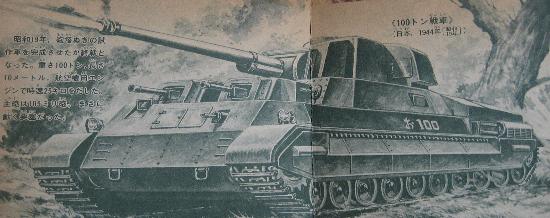


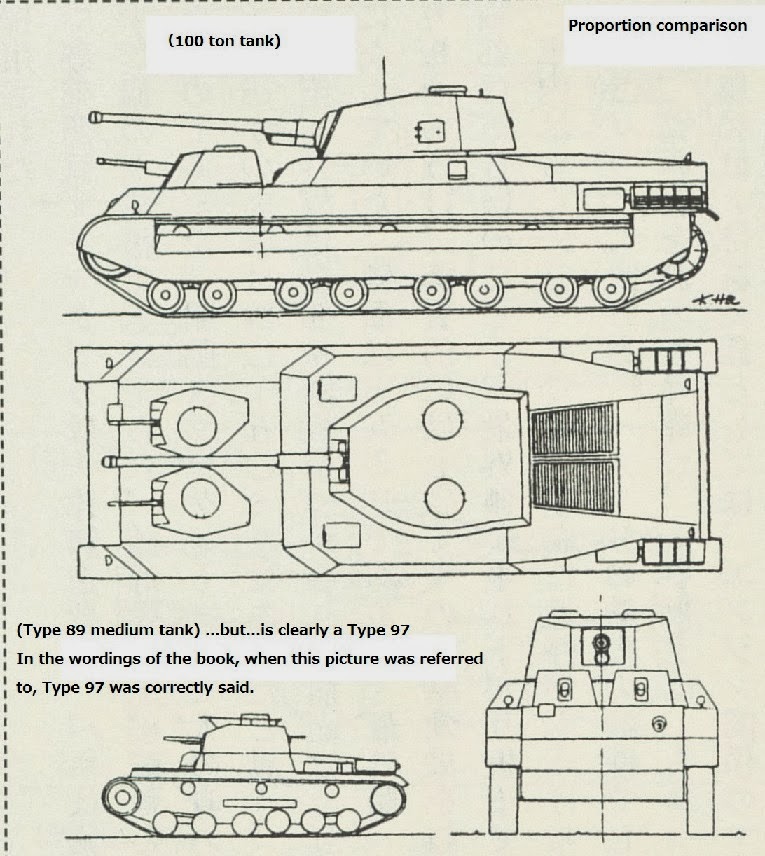

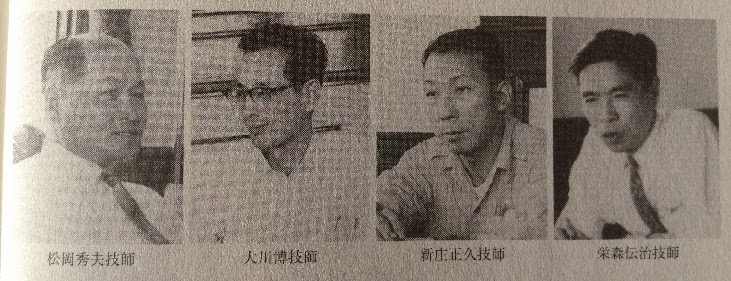
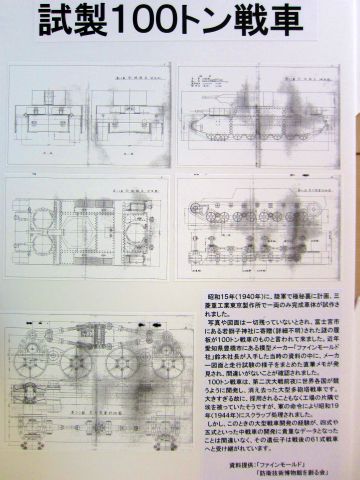
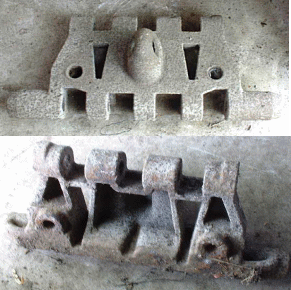

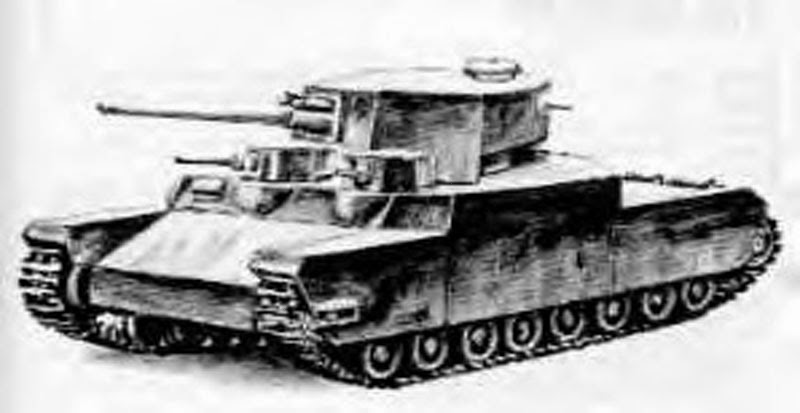
The japanese lover in me just got a heart attack -.- Thank you Silentstalker…. :D :D THIS IS AWESOME :D :D :D :D :D YEEEEEEEEEEEEEEEEEEEEEEEEEEEEEEEEESSS¨!!!!!!!!!!!
Oh and of course SoukouDragon for the original article too ;) ARIGATO GOZAIMASU!!
I hope the smaller turrets don’t make these tanks into KV5s (i.e., massive weak spots in front). Moreover, I do hope the tanks are more ‘fun’ to play than heavies such as KV4 and Maus, which suffer from ‘XP Pinata’ syndrome for some time now.
Well I think that the small turrets will, sadly, be exactly that :/ Big weakpoints, UNLESS they make them armored like the ones on KV-4 elite turret and T110 E3/E4.
from what ive heard they will not be weakspots
This is sure to be a popular article!
hmmmm. looking at the plans, was there supposed to be access to the engine compartment for repairs? That makes things interesting.
Plus, since the crew compartments were separeted with 16mm of armor, it could also be a good japanese tank thing: less crew knockouts.
I wouldn’t count on it. At first it might seem like a good idea, kind of like internal spaced armor, but…at only 16mm, what’s most likely to happen is a shell enters the tank, smacks one of those walls, and suddenly you have both shrapnel from the main hull penetration AND the crew compartment wall(s) to deal with.
It’s possible that the walls would slow down HE shell explosions, but then you potentially have spalling as the walls buckle from the force of the blast.
I’d expect WG to be charitable and make the dividing walls have no effect on gameplay, but don’t get your hopes up for a boost to crew survivability.
The Russian thing is good armor and firepower, the American thing is good frontal or turret armor and good firepower, the German thing is passable armor and respectable (and laser accurate) firepower, and the Japanese thing is to be fucking insane.
That’s what I’m getting here.
Let me address your claims bro:
Russia -what about meds ?
America – What about meds , auto-loader line and turreted TD’s mid-tiers ?
Germany – What about top tier heavies ? (What about brits and their accuracy?)
There are too many unique tanks to come up with general characteristics, even in one research line you get tanks of different combat roles.
There are *some* factors common within nations, especially since WG has made some of their artificial characteristics similar. These tend to start appearing at tier 5 or tier 8 in branches. Obviously there are exceptions.
It’s no good to see “nations”, you gotta see “lines”.
In the Germans, you have the Porsche Line, the Henschel Line, the Supermedium Line and the DB Line. The Americans have the Heavy Line, Medium Line, Auto Line. The French have the AMX-13 line, the Infantry line and the AMX 50 line, the British have the Infantry Line, the Cruiser Line, the Unimediums and the Uniheavies. The Chinese have the Light line, the Medium Line and the Heavy Line. Each of these lines is consistent amongst itself, and not necessarily similar to others. The American Medium line is much closer to the Unimedium line than to the USA Auto line, which resembles more the AMX 50 line.
“For tiers 8 and 9, one way could be to have the tier 8 O-I be the 120 ton version and the tier 9 be a 140 ton version with a little more armor. I am not sure how the WG player base would feel about creating different tiered tanks based off of different interpretations.”
Well, when we consider the T28/T95….
Or the E-50 and the E-50M…
> Japanese heavy line won’t be added until as far as 2015.
wut ?
Daigensui (the main driving force behind the Japanese tree) made a comment a while ago where she said that she had a hard enough time finding info on japanese heavies for 2015, much less 2014.
so no japanese heavies in 2014
muh kaiju tanks ;__;
This is why I’ve started not answering stuff: I’m just saying I have difficulties with research which would put a lot of pressure on me if heavies are planned for 2014. I never said heavies would not appear in 2014.
Then there is hope ;__;
So no heavy s now just med s ? I m saaaad :,(
Whatever the case is, I don’t think that WG will get away with the higher tiers having their historically planned guns. The penetrative value and damage of the 105mms would simply be sad for a 100+t tank at t9 and t10.
WG is surely going to pull smth out of their asses as always
just look at Tortoise:
real: Ordnance QF 32 pounder (94 mm)
ingame: 120mm
or Ferdi:
real: 88mm PaK
ingame: 128mm
as long as chassis and suspension allow it to carry the gun
Oh boy, historical nerds are on the whine streak again
Dude I’m hell far from whining. Just stating the obvious.
Most german tanks would stand fine getting -1 Tier but having their historical equip.
SS stated this as well some while ago.
But I dont really mind how it is at the moment since its a game after all with just SOME historical backgrounds.
Its just how WG deals with it. Referring to historical accuracy when they are in the mood of it (or at least it looks like) and arguing with gaming balance on the other end at the same time.
For the high end heavies like the shown Phantom 100-Ton, what was the armor on the extra turrets like? Would they just end up being giant gaping weak points making your otherwise E-100 esque armor levels useless?
You mean a Japanese KV-5?
I’m totally fine with that.
Me too
Not even tho, KV-5 is just the one shitty R2D2. Imagine having 2 or 3 of them and it just being impossible to properly hide
The Japs had nice dreams… but reality hit them hard.
If you call a murderous nuclear bomb reality…I call it hell from the skies :(
Nuclear bombs were nothing compared to the incendiary bombing done during the war.
Then you know shit my good sir. Read at least about the basics of atomic bombing consequences.
http://en.wikipedia.org/wiki/Atomic_bombings_of_Hiroshima_and_Nagasaki
I’m sorry, ExoNut, but Captain Nemo is right. Incendiary bombing of Japanese cities caused up to 900,000 casualties while atomic bombing killed 150,000. Even if you include the people that died of radiation-induced cancer, the number is ‘only’ a third of what conventional bombing did.
Indeed. Everyone knows Hiroshima and Nagasaki, but everyone forgets about Dresden…
well he wasn’t talking about German cities SdKfz (more like the incendiary bombing of say Tokyo or Kobe), but i see what you are saying.
Fun fact: Winston Churchill personally gave the go-ahead for the Dresden bombing raid, a raid that was done for the sole purpose of creating mass civilian casualties, due to the city being a center for refugees at the time.
“Hey, someone made a perfectly innocent, lighthearted comment.
Lets turn that smile upside-down~”
They had that coming…
I don’t know why you people mentioned nuclear bomb… I was talking about their super heavy tanks they built/wanted to built…
German Heavies: Engineering wonders, carefully tought out with the purpose to kill.
Soviet Heavies: Simple, blunt, effective, like a hammer.
French heavies: Fast autoloading innovative designs.
Chinese heavies: Soviet heavies with some inovation thrown in.
British heavies: Accurate snipers with high RoF.
US heavies: Perfect Allrounders.
Japan Heavies: Fuck you. Deal with it.
“They see me rollin, they hatin’” :P
>Engineering wonders, carefully tought out with the purpose to kill.
>200 ton Maus
>Carefully thought out
Wat
Ahahah nice 1 :))
Yea way to point out one of the only exceptions. And yes, it was carefully tought out. The sheer fact of it being the heaviest AFV in WW2 to be operated indicates how much tought was put in it.
>Yea way to point out one of the only exceptions. And yes, it was carefully tought out. The sheer fact of it being the heaviest AFV in WW2 to be operated indicates how much tought was put in it.
>200 ton tank
> indicates how much tought was put in it.
Wat
Lets just say nobody ever has made a moveable 200 ton tank, except the germans.
If thats not a feat of engineering i dont know what it is.
The Maus was okay…
It is in the game but that’s probably because there are no pesky planes in WoT…. :D
I am very intrigued by this i think WG pulled it off this time ^_^
inb4 Dagensui
lol
Honestly surprised she hasn’t been here yet.
Maybe she’s busy with work or a social life or something silly like that.
Just say something like ‘all Japanese tanks are imitations of German/US designs’. :-)
I hope WG manage to find something decent in the archives. As much as i want these tanks the last thing i want is for WG to make liberal interpretations of these tanks to fill holes in the tree.
- Tier 8: 120-tons O-I or O-I 120
- tier 9 : 140 tons O-I or O-I 140
and then tier 10 : 100 tons Whatever or Whatever 100
Nice logic ! Now It need a top gun to complete the name, like O-I 120 105 (sound like AMX 50 100) , O-I 140 120( AMX 50 120) and finally Whatever 100 (E100)
BTW, at least this tank have rear transmission, so no more fire from frontal shot. I really want tier 10 tank have 120mm gun, so we can have a good protection plus fast firing gun, a perfect combination. Imagine Maus with T110E5 gun. And i also love mini turret. It always make enemy distract from another fatal weak point in any tank(Just think if there no R2D2,where is enemy arm at KV-5? Gunner, Loader, Commander and Driver hatch. That’s even worse than a radio man)
http://i2.kym-cdn.com/photos/images/masonry/000/343/829/1af.jpg
If there was no R2D2 on the KV-5 the enemy would aim straight at the turret. 180 barely sloped is easy to pen. ANd the gun mantle you can pen with 167mm of pen.
Nigga please, the KV-4 has armor that can be penned even by tier 7 but the secret lies in angling the whole damn thing! I don’t know if it’s the fact that you don’t need to grind KV-5 and get through the hell of learning by mistakes that people whine so much about it.
KV-5 is one of my favorite tanks. But believe me, learning how to play it was painfull. But now the gameplay feels like a breeze.
Since it appears that the 100 Tonne and O-I will be spread over 4 tiers, it really makes me curious what they have planned for tier 10. If it was something “new” I would expect the concept to already be known to us, so i’ll hazard a guess to an O-I variant in similar vein to the KV-4 with its 20 interpretations. Would make sense and explain away the void of information surrounding another potential Japanese super-heavy.
Weaponry is interesting. The 105mm will be viable up to tier 8 for and potentially tier 9 if WG artificially inflates the penetration like high tier mediums. Otherwise we’re looking at some form of 120mm i’m guessing.
Any information aboute the , tier 10 heavy ? I m curios about it, maybe a faster maus thing O.o
It’s right there, read the article.
Yes , yes but some internal wg info , maybe :D
No.